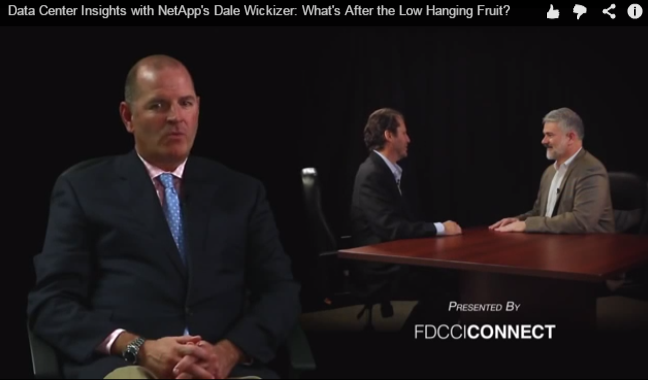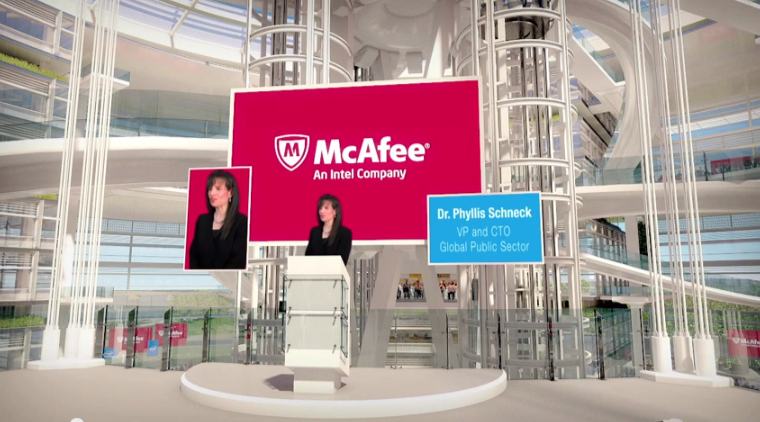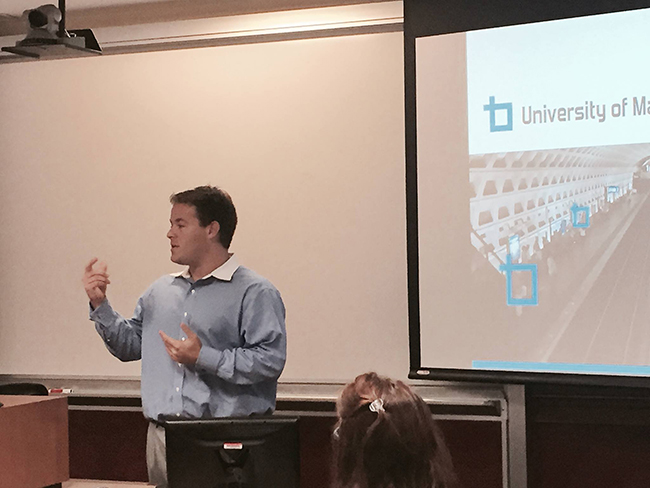We love to tout the great work we are doing for the major, market-leading brands like Adobe, CA, CSC, Cisco, Google, Intel and McAfee. All one-time challenger brands in their own right, each came to us because they recognize that our more progressive, digital-first approach to brand engagement allows them to deliver the kind of real-time customer experience that so perfectly meets their goals. These companies need to continue to feel very now…hot, innovative and culturally relevant…and stay one step ahead of the new generation of brands challenging their dominance.
This becomes increasingly more difficult – and as a marketer…equally more exciting – as these original mavericks of technology begin to slow with age and become mired in bureaucracy. It’s the challenge to make a difference within such a tight box that fuels our creative firepower to think outside of it and deliver game-changing results for even the most established brands.
It is, however, for quite the same reason that we love to keep our thinking fresh with a healthy client mix – and working with less established, but well managed startups and challenger brands is a key part of that. Their nimble and enterprising character allow our teams the freedom to create and rally around new ideas and deliver the forward thinking digital and creative strategies to help our clients in this category disrupt and realign market perceptions and redefine the boundaries of the category to challenge, deposition and ultimately displace the number one brand in the market. Here are some recent examples of that work:
Canvas
Canvas has rapidly established itself as one of the fastest growing mobile business application services in the world, with thousands of organizations leveraging Canvas’ cloud-based, “as-a-Service” mobile app platform to replace cumbersome paper forms with highly customizable mobile business apps that work on nearly every smartphone and tablet on the market.
When Canvas first turned to the Bluetext team as its global PR agency of record, Bluetext put in place a public relations program designed to support high growth and market leadership, penetrate target verticals and also support expansion into global markets. Bluetext has supported Canvas the past two years through triple digit revenue growth and the opening of international offices in Sydney and London.
The media relations and thought leadership program developed and executed on behalf of Canvas represents how Bluetext successfully elevated Canvas’ brand and services to business and national press. It accomplished this by honing in on this through multiple strategies, including a unique use case for Canvas technology that would hold appeal to a new set of media. In this case, it was the use of Canvas by an African reserve to combat Rhino poaching. Bluetext focused on messages that would still communicate the technology’s value proposition, and placed Canvas-centric articles with Associated Press, Bloomberg Business Week and The Washington Post. This coverage snowballed into dozens of additional global articles and led directly to new customer acquisition.
Gamescape, the brainchild of two die-hard fantasy sports enthusiasts and marketing entrepreneurs, came to Bluetext with a clear mission: create a gamification experience leveraging daily fantasy sports that drives customer loyalty as a brandable solution for bars, restaurants and other venues nationwide.
Bluetext took this concept and, with the Gamescape team, and did every aspect of their branding, marketing, and platform design and development. Gamescape wanted to create a sophisticated application that included a robust sports fantasy system, a messaging system for patrons to interact together, and profile creation with location-based geo-fencing. On top of all of that the new platform had to be visually striking, extremely intuitive and easy-to-use.
From loyalty-building rewards points to new ways to communicate with your customers, the mobile-first digital platform Bluetext developed for Gamescape offers an impressive suite of features focused on increasing the opportunities to interact and connect with your guests while offering them new entertainment options. Gamescape’s geofencing technology requires players to be in your establishment in order to join a game.
HelloWallet
HelloWallet, a financial services provider for large enterprises backed by AOL founder Steve Case, wanted to make a big splash in the national media with the value it brings to the market. Bluetext helped package original research on 401k challenges, and crafted a media rollout strategy that leveraged the research and pitted competing publications for the best coverage. The result– a front-page article in The Washington Post followed by major network coverage and more than 50 separate articles in national and business publications including Forbes, the Wall Street Journal and the New York Times.
Bluetext is an equal opportunity branding, digital marketing and strategic communications agency – from leaders of global industry to the upstarts that may one day threaten them.
My exposure to Israeli technology companies over the past several years has admittedly gravitated towards cyber security, video surveillance and biometric startups like BriefCam, FST21 and others often born out of Israeli Defense Forces (IDF) or Israeli Military Intelligence. Whether it has been at ASIS or other security industry conferences, I come away impressed with the sophistication of the technology and potential applications for both commercial and government purposes.
One of the reasons the Showcase of Maryland/Israel Business – which took place on November 18th in Silver Spring, MD – caught my attention is that it extended beyond some of the aforementioned security categories to robotics, e-discovery software, medical equipment, and mobile emergency response solutions. The event was hosted by the Maryland/Israel Development Center, a non-profit organization promoting trade and investment between Maryland and Israeli businesses and research institutions.
In some cases, the companies were Israeli-based and looking to push into the U.S. market more aggressively, while others had Israeli origins but had been operating in Maryland for several years. As someone who has tracked and worked with scores of Maryland technology companies and startups – first as founder of a Maryland Tech PR firm and currently in my role as Partner at Bluetext – it is exciting to see collaboration and efforts by the Maryland Tech community to foster closer ties with Israeli tech firms.
Some of the more provocative demonstrations and companies I spoke with included:
Roboteam – This company designs, develops and manufactures cutting edge, user-oriented, multi-purpose, unmanned platforms and controllers for Defense, Law Enforcement and Public Safety missions. One of its unmanned ground vehicles was on display and operational at the event, where it demonstrated its ability to not only move on flat service but also ascend a podium staircase.
iControl Universal Collaboration Solutions – Collaborative Business Intelligence firm based in Burtonsville, Maryland helping retailers gain unified data insights across its supplier network.
NextNine – Cyber Security firm focused on oil, gas, mining, defense and other critical infrastructure verticals.
RADiFlow – This company provides secure industrial Ethernet solutions for critical infrastructure applications.
Video has become an essential element in nearly every integrated marketing campaign. Whether it’s to highlight a key executive or subject expert, capture a discussion that demonstrates leadership on a topic or issue, or provide a better explanation of a complicated subject, video delivers a strong platform from which to tell a story.
The challenge with video is that it can be of poor quality and doesn’t hold the audience’s attention when not done well. While it may seem simple to set an executive behind a desk and start running the video camera while he or she starts talking, there are a lot of stumbling blocks when taking this easy path. Offices and even conference rooms can be cramped, making it difficult to get the best angles. The lighting is always uneven. Shadows in the wrong places are a constant issue. And if you’re doing a series of video interviews, each office will look and feel different on camera. In addition, sound quality is particularly hard, especially in today’s modern offices where air is constantly moving through the ventilation systems. While often barely audible in person, lavaliere microphones are extremely sensitive and amplify that hidden sound.
A better solution is getting the individuals out of their office and putting them in a controlled setting before a curtain or green screen. This approach offers a number of important advantages for a compelling and quality video experience:
1) The lighting will be consistent across every video. Shadows can be controlled, and office clutter is removed from the scene.
2) Audio can be controlled, with ambient sound kept to a minimum.
3) Backdrops, colors and tones can be chosen to meet the mood of the topic or the intended feel of the interview.
4) Multiple cameras can be more easily used, offering more interesting ways to edit the final piece.
5) Multiple videos in a series can have a similar look and feel, making them look like part of the package rather than random takes shot in different locations.
Bluetext often uses black curtains as well as green screens to achieve the right look for our clients’ videos. Here are a few examples that should get every marketer thinking about a better way to capture executives, thought leaders, experts and customers as part of successful marketing campaigns.
Use the Background to Set the Tone. For the launch of a new program called Smart Degree that enlists adult learners in college courses to complete their degrees, the education services company Nelnet enlisted Bluetext to capture a single mother explaining her challenges in obtaining those college credits. Because this was about those struggling to improve their career and economic status, we chose a heavy black curtain for a serious tone. We shot the video with two cameras, one from the front and a second with a side perspective, to give us room for close-ups and for editing. While we didn’t use an interviewer in the shoot, we had the mother look slightly off-camera to suggest that she was engaged in a conversation explaining her personal challenges. We shot four different takes, and the two-camera shoot made the video more interesting to watch and easier to edit. We added a hint of soft focus to soften the features and tone down the intensity of the lighting.
For a second video in the series, we took a different approach. This time, we were capturing a university executive explaining the value and benefits of the Smart Degree program. We used a green screen and chose an off-white background in post-production. This color selection gave a totally different tone to the video, offering an upbeat perspective on the value of Smart Degree. It also allowed us to decrease the contrast and add warmth to the final product.
Combine a Green Screen and a Backdrop for a Series of Interviews. For a campaign aimed at the Federal market, NetApp and Thundercat asked for a series of five experts to discuss ways for agencies to consolidate their data centers for more efficiency and to meet government mandates. We created a network interview environment, emulating Charlie Rose and the way he uses a dark studio to impart a sense of gravity and weight to his interviews.
Using a long black curtain to absorb light and give a sense of “infinity” to the scene, for each interview we placed the expert at the far corner of a conference table and focused one camera slightly off-center at their face. I played the role of the interviewer, lofting broad questions that allowed them to talk about the subject. The second camera was slightly over my shoulder, setting up the interview scene. We also captured long-shots of the two of us talking before the interview began. To introduce each segment, we enlisted the services of a well-known journalist and influencer in the government technology space. We placed him before a green screen to make the short introductions, and then overlaid those shots onto the interview long-shots. The effect is as if the he were in the studio with us.
This approach serves several purposes. First, it allows each of the interviews to have the same look and feel so they don’t seem random or disjointed. Second, the black curtains bring a professional tone to the videos. And third, the interview style and introduction make the segments more interesting and engaging to the audience.
Try Something Different to Keep the Audience Engaged. Technology giants McAfee and Intel were looking for a more interesting way to provide video lectures when highlighting their new solutions. As an alternative to capturing their experts behind a podium, we created an entirely different look and feel. We captured each expert in front of a green screen as if they were speaking before a large audience. A still of the first frame of each video was captured and placed inside a digitally-created, 3-D modeled “Agency of the Future.”
As the visitor to the site moves around the virtual building, they can select from each of the discussions by clicking on the still image. That image immediately comes to life as the video begins to play, and simulates a live presentation. As an added feature, we also placed the video inside a larger monitor screen in each video scene next to the speaker, similar to how jumbo screens are used in large auditoriums. That added feature gives visual interest and a touch of reality to a virtual environment. The Agency of the Future has been a huge success for Intel and McAfee, with visitors staying on site far longer than other campaigns they had run.
Video should be interesting, engaging and compelling to be effective. Understanding the options and the value of backdrops, curtains and green screens can make the difference between having your customers take notice and losing their interest.
On its 10th anniversary of connecting communicators, Capitol Communicator determined that to continue to grow and be a vibrant part of the Washington, D.C., marketing and communications community, its next 10 years would be built on a new digital strategy and complementing user experience strategy. As a central hub for news, events and information for communicators in the mid-Atlantic, Capitol Communicator wanted a more modern platform.
Capitol Communicator selected Bluetext to partner with for this complete digital overhaul. Bluetext has delivered an enterprise-level WordPress implementation with comprehensive CMS publishing technologies that are integrated to allow Capitol Communicator to get best-in-class SEO, content management and smart, modern design.
Said Paul Duning, publisher of Capitol Communicator, “After a very exhaustive review, Bluetext had the energy, creativity, digital savviness, and firepower to be our new digital partner, and they really delivered. Our community has spoken, and they all love the new site which is helping us further validate that we are taking the brand in the right direction with a new digital platform as the centerpiece.”
Capitol Communicator is dedicated to bringing together the vast spectrum of communications professionals who influence and educate the Mid-Atlantic region and the world by providing news; trends; education; and opportunities for networking, career enhancement, business exchange and showcasing great work, Capitol Communicator serves as a resource to the region’s communications community. Capitol Communicator focuses on building a community that encompasses professions that include public relations, advertising, marketing, media, creative, video, photography, printing, digital and the multitude of other professions that support this region’s multi-billion-dollar communications industry. And, Capitol Communicator is a proud supporter of many organizations that share in their mission of providing professional development to the communications community.
2014 has been a year of amazing changes in the world of marketing, where micro-targeting via social platforms is now mainstream, banner ads are becoming passe, personalized content is in, native and sponsored ads are growing in popularity, video is getting shorter, and a wide range of other evolutionary marketing trends are exploding on the scene–all designed to help companies and organizations identify and reach their customers. And guess what? The sky hasn’t fallen, at least not yet. But looking at 2014 is almost, well, old news. As fast as digital transformation has hit us this year, it will move that much faster next year. So we at Bluetext thought this would be a good time to start looking ahead to 2015. We asked a wide range of senior marketing executives–including technology leaders, information services providers, financial industry start-ups, and even top trade associations–to gaze into their crystal balls and share with us their Big Bet for 2015. We’ve compiled those below, and think you’ll find their insight provocative and challenging.
BET #1. PREDICTIVE MODELING
by NICK PANAYI of CSC Director, Global Brand & Digital Marketing
As we look forward to next year and beyond, I can tell you honestly that the “next big thing” in marketing has never been clearer to me. What I believe will separate good marketers from exceptional ones is the exploding field of predictive intelligence.
We all have abundant data now. And we all have real-time marketing dashboards that act as a high-definition rear-view mirror of our customers’ digital footprints. That’s table stakes. What gets real interesting moving forward is the ability to leverage increasingly powerful predictive modeling tools to peer into the future and optimize your marketing efforts before they even start! Predictive modeling allows you to extract maximum value from the investments you already made in your digital ecosystem and the knowledge you’ve gathered about your customers’ digital body language…..
Read more about Predictive Modeling, and what top executives from organizations such as Georgetown University, NetApp, and others think is in store for 2015 by registering below.
I had the opportunity to get up close and personal with a collection of some of the the most incredible, technology driven warfighting machines at the 2014 AUSA event at the Washington Convention Center.
The Association of the United States Army (AUSA) annual meeting and exposition once again brought high-tech wares and weapons to the nation’s capital. And In what was a sure sign of the strength of the defense community and its determination to support the warfighter – the turnout for this year’s event was the strongest I have seen in years. And with the sudden and marked increase in global threats to our national security – the air was thick with patriotism.
The three-day event brought more than 500 industry and military exhibits and more than 30,000 attendees to AUSA. The expo also included workshops and talks by top Army and Defense Department officials on the state of the U.S. military.
Bluetext is proud to honor our defense community and the role we can play to help support its vision and mission of technology, innovation and continued dominance in global warfare.
Standing out in a sea of 400 of the world’s leading cyber security vendors and startups is no easy feat. Each year, more than 28,000 cyber professionals swarm to the RSA Conference North America to experience the latest and greatest of what the industry has to offer.
For emerging and even established cyber security vendors, few opportunities like RSA exist where so many existing and potential customers are accessible. PR and marketing planning for RSA begins months before the event itself, and can be expansive in nature – ranging from message development and creating innovative, dedicated landing pages to booking and providing on-site support for press and analyst briefings.
Capturing the attention of decision makers, press and analysts at RSA 2015 will be no easy feat. Reporters and analysts are bombarded with hundreds of briefing requests, often reserving 1×1 slots for familiar names with significant announcements to make. That said, success is possible and there are strategies that do work. Here are 5 tips for generating buzz and briefings at RSA 2015.
Don’t wait until RSA pitch to connect with reporters
Your firm may have relationships with some reporters and analysts, and lack them with others. Fair or not, reporters are going to pay more attention to emails from PR practitioners they know – particularly when it comes to sifting through 200-300 conference meeting requests. In one of his parting columns for Forbes, A Day In The Life Of A Tech Reporter’s Email Inbox, contributor J.J. Calao broke down one day’s worth of emails. Of the 34 PR story pitch emails that day, he responded to six of them – and he personally knew five of the six he responded to and did not respond to 29 pitches from publicists he didn’t know.
The point is this: many PR professionals worry about reaching out to reporters they don’t have strong relationships with before the RSA pitch – thinking it is better to wait until they have “big news” to get their attention. The problem is that your news probably isn’t as big as you think, and if you wait until the moment when a reporter is receiving the highest volume of pitches they get all year to try and break through, you will be out of luck.
Instead, find a way to get on the radar of influencers before the RSA pitch to make a connection. This could be as simple as tweeting the reporter in response to a recent article they have written, or alerting the reporter to new cyber security research. It is hard enough to try, in a single brief email or phone pitch, to explain what your company does and then explain any news announcement. Use a pre-RSA pitch strategy to expose the reporter or analyst to your brand and where you fit into the cyber security ecosystem. Then, the RSA pitch can cut right to the chase on news being announced.
Understand what to announce
There are reporters at RSA who will conceivably be interested in new products and writing product round-ups. But to pitch reporters who have, understandably, grown cynical about new product proclamations, it is very risky to have this be the anchor of your outreach strategy. At the same time, reporters are not interested in hearing your CEO’s “perspectives on top cyber threats” or “insights into the next vulnerability that will be exploited by cyber criminals.”
What reporters may be interested in is provocative new research your firm has conducted that supports any trend position you are staking out or that is being overlooked in the current cyber conversation; or customer case studies/customer-based research that attaches real-world examples to evolving trends. You can announce products at RSA, but the product story must fit into a broader narrative that is supported by data and/or customers.
Don’t go it alone
The limited amount of time reporters and analysts now have for 1×1 meetings at RSA borders on the comical, as the time windows have shrunk to as little as 15-20 minutes. I can’t even run through what I had for breakfast in 15 minutes let alone have a meaningful conversation that a reporter will remember at the end of a day full of 32 quarter-hour briefings.
Make the reporter’s life easier by killing two or three birds with one stone. Is your cyber security product part of a broader suite with partner solutions that a customer is using? If so, coordinate a single plan of attack with these partners that will add greater weight and simplify the story. Instead of a reporter getting a similar, overlapping pitch from three vendors, they get one tight, singular pitch that ties everything together. This approach is particularly valuable for emerging cyber brands that partner with a more established brand with established inroads to key reporters.
Working with partners, you can also set up landing pages in advance of RSA and direct influencers to key information on that site. This can whet the appetite of influencers and drive momentum into the conference.
Research Conference Product/Company Awards
RSA has meaningful award and innovation programs, such as the RSA Conference Innovation Sandbox Program, that offer a credibility check when communicating with customer decision makers, partners, press and analyst. These award deadlines are several weeks in advance of the conference and require the client to have sufficient advanced knowledge it will be announcing a new product at the show.
Engage on social if not in-person
For cyber security reporters and analysts you are not able to connect with in person at conferences, engage on Twitter to in advance of and during RSA to identify what is capturing their interest. Finding a key reporter at a large conference is akin to the proverbial needle in the haystack. You can increase your chances by following these influencers on Twitter, and perhaps one might post that they are headed into a particular panel session – thus shrinking that haystack considerably.
For everyone at RSA, there are also hundreds of others who want to attend but cannot for budget, schedule and myriad other reasons. Use your presence at RSA to deliver on-the-ground intel from sessions, themes, and demos, and promote that you will be doing this in advance of the Conference.
In the ever changing world of digital marketing the phrases we hear from our clients more and more are around the “Customer Journey” and achieving pinnacle SEO success for their brands.
In order to address this lets first break down the two ingredients:
Search Engine Optimization Best Practices:
- Define Your Target Audience and Their Needs
- Categorize Keyword Research
- Find Gaps and Opportunities
- Define Competitors
- Learn From Your Competitors
- Customize an SEO Strategy & Recommendations
- Create must-have SEO Recommendations
- Prioritize and summarize
Customer Journey Best Practices:
These are five points any company contemplating, planning, or already undertaking a customer journey initiative should consider:
- Define the Behavioral Stages
- Align Customer Goals with the Stages
- Plot Out The Touch Points
- Determine If Your Customers Are Achieving Their Goals
- Create Recommendations for Change
Now that you have your SEO and Customer Journey Best Practices in place, here is your roadmap to creating an SEO Customer Journey:
1) Create your own customer journey map.
2) On your map, identify the specific points at which a user is conducting one of the three types of search queries (navigational, transactional, or informational).
3) Make a list of keywords/queries for each point in the customer journey that involves a specific query type.
4) Connect each keyword to a specific method of SEO strategy.
Now, take those keywords and plug them into your SEO strategy. How? Let’s take one keyword from the above example — “how much storage can I afford?” Here’s what you might do:
1) Create a page on the website
2) Page title: “How much storage can I afford? | Storage Planning”
3) H1: “How much storage can my business afford?”
4) Article: Discuss answers to this question in the article, and provide a clear Call to Action (CTA) at the end.
5) Create a series of four evergreen blog articles that deal with this question. Use this keyword and any long tail variations of ”how much storage can I afford?”
6) Create an infographic that answers the question “”how much storage can I afford?”
7) Interview several experts on storage affordability, and post a video series on YouTube.
Today I was honored to be asked to speak to the University of Maryland’s Smith School of Business MBA class about creative and digital marketing. The students were senior execs spanning many Fortune 500 companies across a variety of industries. The interactive dialogue was great. Jeb Brown, the MBA professor, issued three mandates for my presentation:
1 – Describe what makes a bad client
2 – Describe how to get the most out of your agency
3 – Describe the way you solve clients problems
#1 I wanted to start out with some humor. The following “client sayings” are great signals for what makes a bad client.
#2 When asked to talk about how to get the most out of your agency, I focused on this simple list…
• Be thoughtful
• Be patient
• Be open
• Be kind
• Be consistent
• Be appreciative
• Be budget-realistic
• Be schedule-realistic
• Be generous with your time
#3 When asked to describe the way Bluetext solves Marketing, Branding, and Communications challenges, I decided to use client case studies and present our methodology through the lens of each client’s custom solution. Please click the following links to learn about those stories.
1 – Google
2 – Adobe
3 – FireEye
It was a real honor to talk to so many great marketing, branding and communication executives from so many industries. The conversation was lively, with humor at times but also serious when talking about the importance of Return On Investment in the ever-changing marketing and digital world we live in. To learn more about this presentation and Bluetext please contact me.













